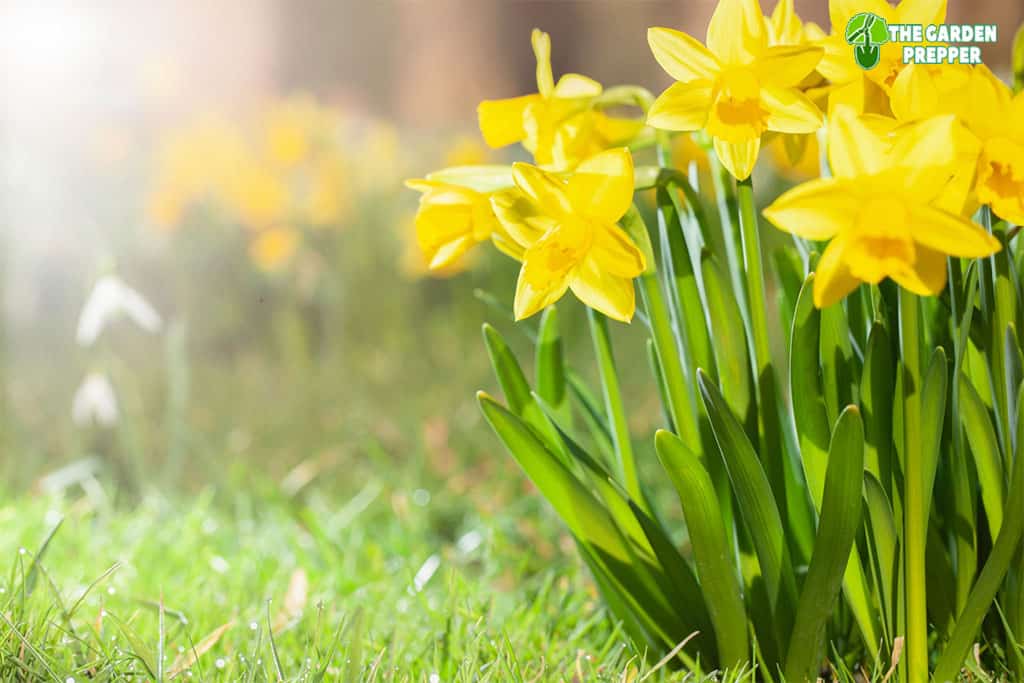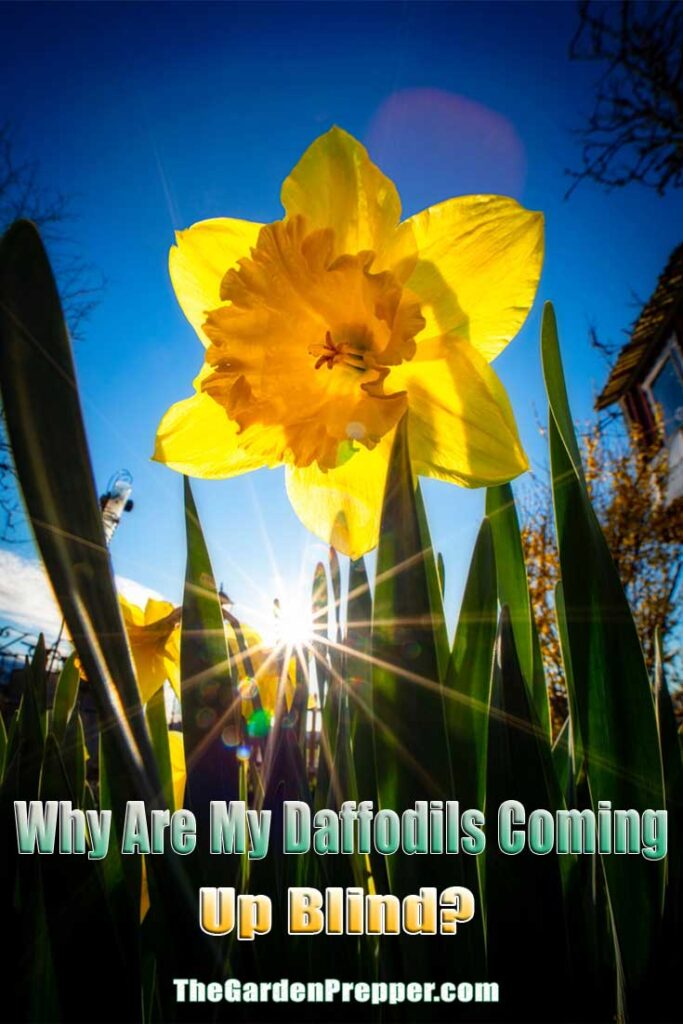Daffodils are beautiful flowers you would want to see blooming in your garden! However, gardeners face a huge fear as they grow them: Daffodil blindness. This means that healthy daffodil bulbs grow without any flowers.
It’s quite puzzling when you see them come up without flowers, leaving you wondering, “why are my daffodils coming up blind?” There are different reasons behind the daffodil blindness, and not to worry, as there are remedies you can follow!
Read on to find out the reasons why your daffodils come up blind and what you can do.

Why Are My Daffodils Coming Up Blind?
The most common reason why your daffodils come up blind is from shallow planting. This is a common reason only if you just planted new daffodils. But if you have bulbs that remained undisturbed for years and suddenly failed to bloom, then it may be another issue.
Bulbs need to be planted 2-3 times their height. You will know the depth by standing your bulb on its base, measuring from its root pad to the tip where leaves and flowers should emerge. For instance, a bulb that measures 5 cm from the bottom to the top should be planted with 10-15 cm of soil on top.
But if you have sandy soil or one that is free-draining and of poor quality, plant your bulbs even deeper.
If ever your daffodil bulbs were planted shallowly, they would divide and grow a lot of small bulbs that are too immature and small to begin flowering. You’ll notice that if your bulb grows blind and you dig it up, you can see a lot of small bulbs.
This can be fixed, though! Take those small bulbs to a fertile vegetable patch where they may be able to grow. Once they grow, you can move them back to the area you’d like them to bloom in.
Read more: What to Do When Daffodils Stop Blooming: Keep It Growing Well!
Other Reasons Behind Daffodil Blindness
Besides the shallow planting, there are also other reasons why you experience daffodil blindness, such as:
- Pruning: If you cut off the bulb leaves to early, your daffodils won’t bloom again. The leaves are required to produce food for next year’s bloom, so cut them only when they are fading and turning yellow on its own.
- No Feed: Help the bulbs build their strength for next year’s bloom through feeding them. Try a tomato feed and water it around the plants every 7-10 days for 6 weeks.
- Seeding: Bulbs would waste energy trying to form seeds, to the point they don’t focus on flowering anymore!
- Moisture: When your bulbs go through a dry period before they flower, it may result in the abortion of immature flowers. Dryness after a bloom would cause the bulbs inability to initiate flower buds for next spring. Furthermore, bulbs that are planted under trees that grew bigger may cause daffodil blindness, as the soil becomes drier.
- Bugs: Narcissus bulb flies may attach the base of your daffodil bulbs, eating developing flower buds, causing blindness. Daffodil eelworms may also do the same, so if you see these pests, dig up the bulbs and dispose them properly.
- Time: If you plant too late, then it may lead to daffodil blindness. Make sure to plant your daffodils in late September (the latest).
- Space: Bulbs that are too crowded and close to one another can cause blindness. Remedy this by lifting when you see leaves turning yellow, then replant the bulbs with more space between them.
Wrapping It Up
Daffodil blindness is a common problem gardeners face, and quite a frustrating one at that! Fortunately, there are ways you can prevent it from happening, and it all starts with proper care from the start of planting. That way, you can enjoy a lot of beautiful blooms in the next growing season to come.
I hope you learned a lot about daffodil blindness and what you can do to stop it from happening to your own bulbs. Take these tips in mind and continue caring for your daffodils for it to continue thriving. Happy gardening!
